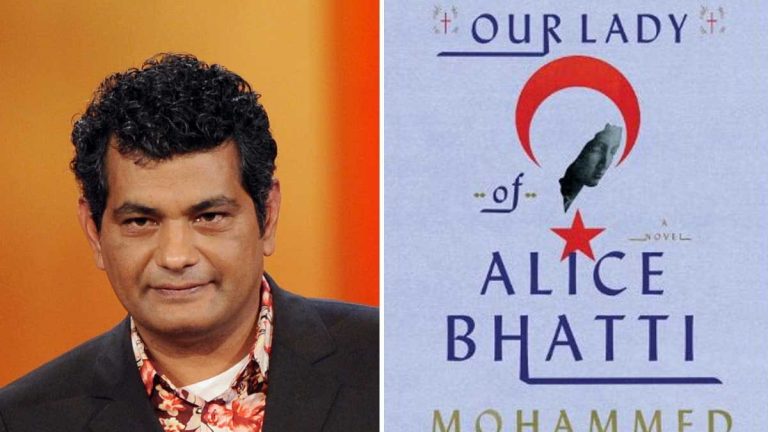
Our Lady of Alice Bhatti is a novel that shows that Pakistani women are living in the heart of religious, and political violence. Hanif has shown how women are hunted by men
Reviewed by Shoukat Lohar
Introduction
Mohammed Hanif is a Pakistani writer, journalist, and playwright. He was born in Okara, Punjab, in 1965.
Hanif started his career as a journalist and worked for the BBC in London for several years. He has written several plays for BBC radio, including ‘The Dictator’s Wife’ and ‘What Now, Now That We Are Dead?’
Hanif’s first novel, ‘A Case of Exploding Mangoes,’ was published in 2008 and was shortlisted for the Guardian First Book Award. The book is a fictionalized account of the mysterious death of Pakistani dictator General Zia-ul-Haq in a plane crash in 1988. The novel was highly praised for its wit, satire, and incisive commentary on Pakistani politics.
Mohammed Hanif’s second novel, ‘Our Lady of Alice Bhatti,’ was published in 2011.
The novel is set in the gritty underbelly of Karachi and explores themes of love, violence, and religious intolerance.
Background
‘Our Lady of Alice Bhatti’ is a novel set in the Pakistani city of Karachi. The novel follows the story of Alice Bhatti, a young Christian woman who works as a nurse at the Sacred Heart Hospital, a public hospital in Karachi. Alice’s life is a constant struggle against discrimination and prejudice because of her gender, religion, and social class.
The novel’s plot revolves around Alice’s relationship with Teddy Butt, a young Muslim man who falls in love with her despite the obstacles.
The novel explores the theme of religious intolerance in Pakistani society
Teddy is the son of a powerful politician and gangster who uses his influence to make life difficult for Alice and Teddy.
As the novel progresses, the characters’ lives become intertwined with a series of violent events that take place in Karachi, including a bombing at a Shia mosque and a gang war between rival factions. The violence and chaos in the city serve as a backdrop to the story of Alice and Teddy’s love and their struggle to overcome the obstacles that stand in their way.
Themes
Religious Intolerance: The novel explores the theme of religious intolerance in Pakistani society. The novel shows how people from different religions and sects are discriminated against and oppressed because of their beliefs. Alice, being a Christian, faces discrimination and prejudice from her Muslim colleagues and patients.
Gender Inequality: The novel also highlights the issue of gender inequality in Pakistani society. Alice faces discrimination and harassment because she is a woman. She is also subjected to sexual harassment by her male colleagues and patients.
The hospital was a strange place, where hope and despair were served on the same plate, where the sick were treated and the dying were left to die
Love and Sacrifice: The novel explores the theme of love and sacrifice. Alice and Teddy’s relationship is an example of how love can overcome all obstacles. They are willing to sacrifice everything for each other, even in the face of violence and danger.
Features
Satire: The novel uses satire to criticize the corrupt and violent aspects of Pakistani society. The novel satirizes the hypocrisy of politicians and religious leaders who use religion for their own selfish ends.
Dark Humor: The novel uses dark humor to provide comic relief from the otherwise grim and violent storyline.
Realistic Setting: The novel’s setting in Karachi is realistic and vividly portrayed. The author paints a picture of a city plagued by violence, corruption, and religious intolerance.
Symbolism: The Sacred Heart Hospital: The hospital where Alice works is a symbol of hope and compassion in a city plagued by violence and intolerance.
The Blue Veil: The blue veil that Alice wears is a symbol of her Christian faith and her struggle to assert her identity in a society that oppresses her.
Characters
Alice Bhatti: The protagonist of the novel, Alice is a young Christian woman who works as a nurse at the Sacred Heart Hospital. She faces discrimination and prejudice because of her religion and gender.
Teddy Butt: A young Muslim man who falls in love with the lady.
Excerpts of from the novel
“Alice had never seen her father smile. She had seen him cry, shout, and once he had beaten her mother so badly that the neighbors had to break down the door to stop him. But a smile was a rarity, almost like a UFO sighting or a lottery win.”
“The hospital was a strange place, where hope and despair were served on the same plate, where the sick were treated and the dying were left to die, where life went on at a frantic pace, but death was never too far away.”
“Alice had always been fascinated by the small, hidden worlds that existed within the big city, the secret lives that people led behind closed doors, the stories that never made it to the front page of the newspapers.”
“Alice didn’t have many friends. She had never been one to socialize, preferring the company of books and her own thoughts to the mindless chatter of her classmates.”
“There was something about the way he looked at her that made her heart skip a beat, something in his eyes that told her he saw her as more than just another nurse in the hospital.”
Conclusion
Our Lady of Alice Bhatti is a novel that shows that Pakistani women are living in the heart of religious, and political violence. Hanif has shown how women are hunted by men. The end of love is shown as tragedy in this novel.
_________________
 Shoukat Lohar is Assistant professor in English at Mehran University of Engineering and Technology Jamshoro. He can be reached at Shoukat.ali@faculty.muet.edu.pk
Shoukat Lohar is Assistant professor in English at Mehran University of Engineering and Technology Jamshoro. He can be reached at Shoukat.ali@faculty.muet.edu.pk